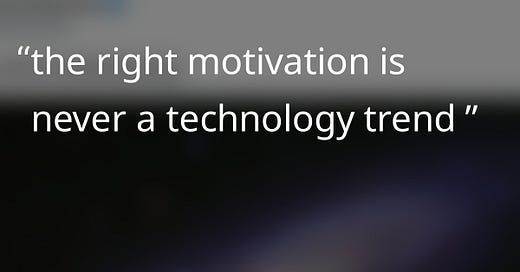SVRGN Weekly Digest #6 💫
Nobel prize winners for microscopy research, eye tracking, seeing ourselves in the universe
This turned out to be a week in the name of light and reflections. Hope you enjoy this edition of SVRGN!
🤼 People
Andreas Kupke - Engineer and angel investor
Andreas is a hypersonics engineer turned fintech founder and prolific aerospace, electric aviation and energy angel investor. He is a real resource for founders when it comes to navigating the aerospace startup landscape. We share excitement for the future of human-machine interactions, in-space compute, and some even further out there ideas in the making.
Gregoire Le Jeune - Lead at Hito Studios
Greg has gone from mining bitcoin on his own racks in the early days, to building businesses and advising startups on everything from growth to strategy to operations. Closely tied into the Starkware ecosystem since a long time, Gregoire is the perfect lead for the newly launched venture studio backed by Starkware and Argent - Hito studios. If there’s one thing we agree on, it’s that operational excellence can go a long way, and is something we’re actively looking for in founders.
Stefan Hell: Nobel Laureate who revolutionized microscopy
At Deutsches Museum in Munich, I had the chance for a brief chat with Stefan Hell - 2014 Nobel Laureate in Chemistry. He is known for overcoming the diffraction limit of light microscopy, meaning we could for the first time do imaging of structures smaller than half the wavelength of the incident light, so below <200nm.
🚀 Companies
Printoptix - 3D printing optical elements
Status: Grant-funded
Source: CAVI
Founders: Nils Fahrbach, Simon Thiele
Why it’s cool:
3D printing is now at the stage where we can print materials with desirable properties for optics. And at such precision and micro scale that new types of lenses can be designed. They use another German innovation called Two-Photon Polymerization, from Nanoscribe to achieve these tiny lenses.
SomaReality - eye tracking for cognitive sensing
Status: Early revenues
Source: Inbound
Founders: Adrian Brodesser, Michel Varilek, Miel Satrapa
Why it’s cool:
BCI today is often focused on implants, or wearing impractical hats. SomaReality have found a way of correlating cognitive states with involuntary eye movements such as pupil dilation. 80% is due to inbound light, and 20% is related to what our nervous system is doing. An unexpected application area of this technology is in learning, as a decrease in cognitive load is closely correlated with familiarization with the skill. For example cycling is a task that requires a lot of concentration and focus the first times you do it, but after some time you can do it without thinking. Optimizing training time by observing a decrease in cognitive load and then moving on can be surprisingly high leverage in some cases (e.g., flight simulation).
💡 Ideas & Science
Zero-Knowledge Proofs of Training for Deep Neural Networks
There is now a way of proving that a deep neural net was trained on a certain dataset! The prover - Kaizen - achieves provable security, succinctness in size and proving time, privacy guarantees as well as some level of practicability. The team uses a combination of GKR-style proofs and recursions on top, achieving constant proof size independent of number of iterations of gradient descent done. This is 43x faster than a naive approach and can handle small neural nets of 10 million parameters.
Can I ramble for a sec - Sari Azout
A beautiful, and sometimes existential, piece of writing on why we do the things we do in tech and the world. Starts with a pivot, ends with the sublime feeling of insignificance.
It’s election and bitcoin halving year, so psyops are bound to happen. If you haven’t read Mindf*ck by Chris Wylie on Cambridge Analytica from the inside, that’s a good place to start. That was 2016. In 2024, history might repeat itself, or should we say outdo itself given we have TikTok, TruthSocial and hundreds of niche, polarized platforms on the internet, ripe for private and public influence operations. 81 countries in the world use “social media and computational propaganda to spread disinformation”. There was 48 countries in the world (incl. Spain, South Africa, US, UK, Argentina and Hungary) with evidence of private firms using computational propaganda on behalf of a political actor.
Platforms are trying to combat it with take-downs of accounts, but given how the marginal cost of human-level content generation is approaching zero, it feels like a losing battle. How can we protect ourselves? Let us know if you are working on a solution!





